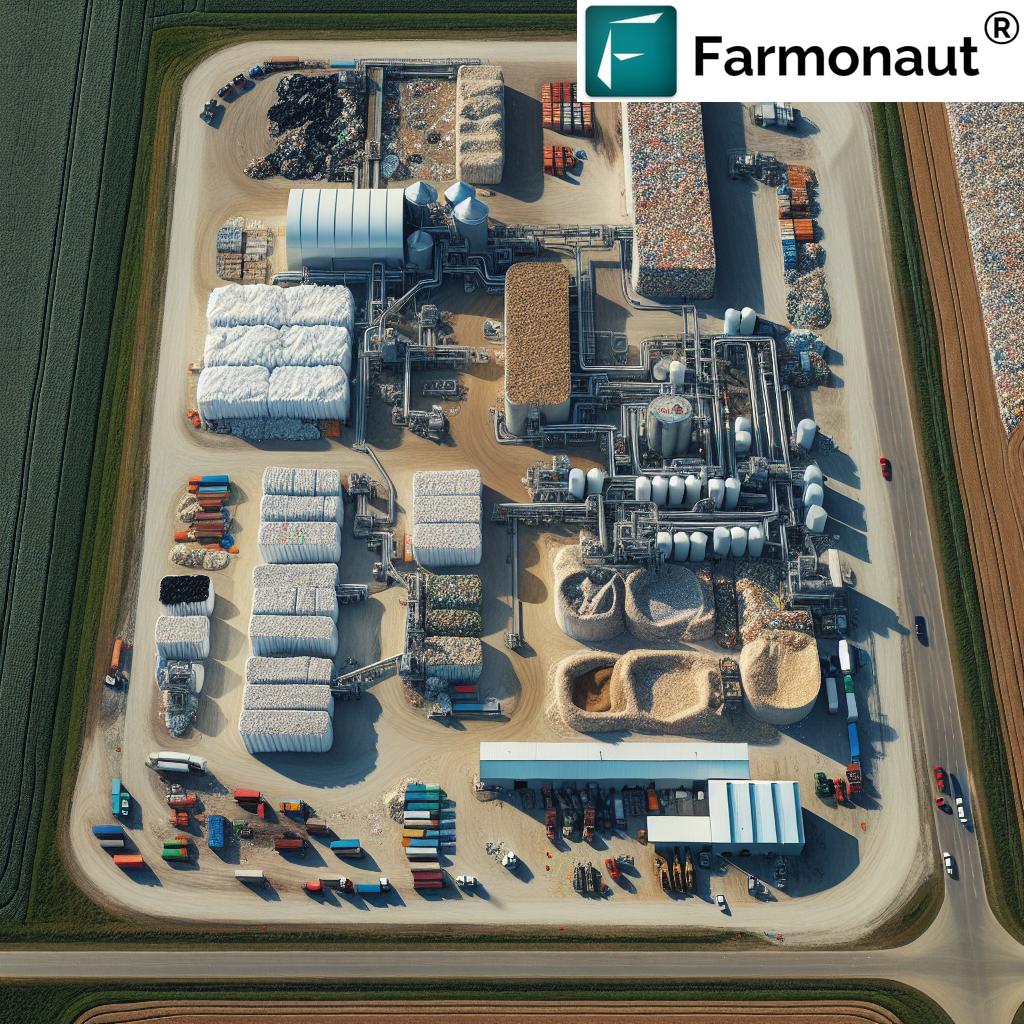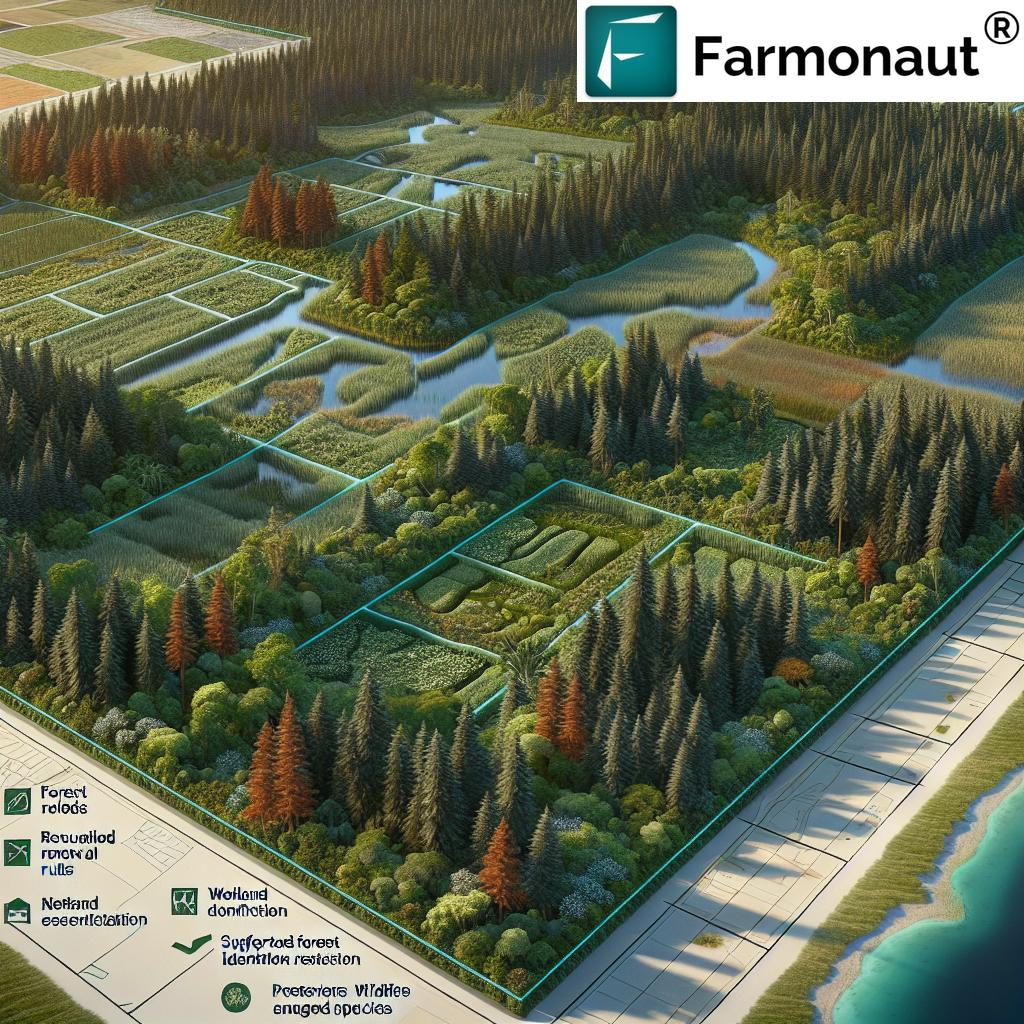Table of Contents
- Introduction: Understanding Tariff Agriculture in 2025
- What is Tariff Agriculture? The 2025 Landscape
- Why Do Countries Levy Agriculture Tariffs?
- US Agriculture Tariff Trends in 2025
- Canada Agriculture Tariff Trends in 2025
- Agriculture Tariff Impact: Trade, Food Prices & Farming
- Tariff Strategies & Policy Shifts for 2025 and Beyond
- Satellite Solutions & Tech: Our Role in Modern Agriculture
- FAQ: Tariff Agriculture 2025
- Conclusion: Shaping Food Security, Trade, and Sustainability
Tariff Agriculture: 2025 US & Canada Agriculture Tariff Trends
Meta Description: Agriculture tariff rates in the US and Canada are pivotal for shaping food prices, farming competitiveness, and trade in 2025. Explore tariff agriculture and its global impacts.
Summary:
Agriculture tariffs remain a critical element shaping global agricultural markets and trade dynamics in 2025. These tariffs—essentially taxes imposed on imported agricultural goods—are pivotal tools that countries use to protect their domestic farming sectors, influence food security, and navigate complex international trade relationships. In the context of the United States and Canada, agriculture tariffs continue to play a significant role in determining the competitiveness of farmers, the accessibility of crops, and the broader geopolitical landscape.
What is Tariff Agriculture? The 2025 Landscape
As the world grapples with volatile markets and uncertain geopolitical dynamics, tariff agriculture has proven to be a critical element in shaping trade and farming worldwide. Agriculture tariffs—the taxes or duties levied on imported agricultural products—hold immense sway over how countries, including the United States and Canada, navigate domestic agricultural interests, food security, and global trade policies in 2025.
The concept of a tariff on agriculture involves strategically levying duties on key farm commodities:
- Grains (e.g., wheat, corn, rice)
- Vegetables & fruits
- Meat (beef, poultry, pork)
- Dairy products
- Sugar, oilseeds, and other agri-commodities
These tariffs act as barriers to imports, making foreign goods more expensive and—thus—less competitive against locally produced items. The strategy enables governments to protect domestic farmers, and safeguard livelihoods, amidst complex global supply chains.
The Role of Trade, Policy & Tariffs in 2025
With international agreements—such as the USMCA (United States-Mexico-Canada Agreement) and WTO—setting the stage, the way tariffs are imposed and managed is constantly evolving. The focus in 2025 is not only on direct economic protection but also on influencing sustainable agricultural practices, food security, and fair trade relations.
As we examine both US agriculture tariff and Canada agriculture tariff policies this year, it’s important to contextualize them within broader international relationships, domestic economic pressures, and local political priorities that continue to shape the landscape of agriculture, food production, and rural economies.
Comparative Agriculture Tariff Matrix (2024-2025)
Why Do Countries Levy Agriculture Tariffs?
Tariff on agriculture remains a pivotal tool for most countries seeking to protect domestic farming and secure their food systems, especially in 2025’s challenging global landscape. Governments justify these measures primarily to:
- Protect Domestic Farmers: Prevent imported products (like fruits, vegetables, meat, and dairy) from driving down prices for local producers.
- Boost Rural Economies: Many rural livelihoods are directly tied to agriculture. Tariffs often act to stabilize incomes in these regions.
- Food Security: By incentivizing domestic production, tariffs reduce dependence on potentially unreliable international supply chains.
- Counter Unfair Practices: Retaliate against unfair trade practices abroad—such as when global partners impose protectionist tariffs or subsidize their farmers—to restore balance.
- Promote Sustainable Practices: More countries now offer tariff reductions or exemptions for sustainably farmed products, aligning with global climate and environmental goals.
In today’s context, international agreements and domestic politics directly influence how and why specific tariffs are imposed or lifted, creating both challenges and opportunities for farmers navigating complex, global markets.
US Agriculture Tariff Trends in 2025
The United States continues to play a leading role in shaping global agriculture tariffs. In 2025, the US agriculture tariff structure remains a topic of considerable debate and adjustment due to growing economic, environmental, and geopolitical pressures.
Key Features of US Agriculture Tariffs (2025):
- Protective Measures: The US maintains various tariffs on critical agricultural products—particularly sugar, dairy, beef, fruits, and vegetables—to shield its vast domestic sector from potentially detrimental “dumping” by overseas partners (e.g., China, European Union).
- Tariff Rates (2025): Average agricultural tariff stands at 6.2%, with higher rates for select sectors like dairy and sugar (see tariff matrix above).
- Trade Disputes: Ongoing disputes with China, the EU, and others have led to a cycle of retaliatory tariffs. Though some have been reduced or lifted through diplomatic negotiations, other duties persist as leverage in trade talks.
- Sustainability Incentives: To encourage sustainable farming practices, some tariffs are being reduced or eliminated on “green” imports, especially products verified for low carbon footprint or ethical production (for example, using traceability technologies like blockchain-based traceability).
- Price Impacts: With tariffs raising the cost of foreign goods, American consumers often face higher prices for imported items, but domestic producers gain a more competitive market environment.
The US continues to navigate complex international relationships with partners, balancing protectionism and market access. This has led, sometimes, to heightened tensions and supply chain disruptions during periods of retaliatory tariff escalation.
Example: Dairy, Fruits, and Meat Tariffs
Dairy and sugar tariffs in the US are notably high – crucial for states with powerful farming sectors. Beef, pork, and certain fruits and vegetables also face significant import duties, particularly during periods of trade disruption or anti-dumping enforcement. The US agriculture sector’s productivity allows it to lead exports worldwide, but tariff negotiations and disputes will continue shaping these trade flows throughout 2025 and beyond.
Canada Agriculture Tariff Trends in 2025
Like its southern neighbor, Canada’s agriculture tariff policies reflect a balancing act between fulfilling international trade commitments and protecting domestic industries. In 2025:
- Tariff Landscape: Canada agriculture tariffs average 4.8% in 2025—slightly lower than the US rate—with certain sectors (like dairy and poultry) subject to notably higher protection.
- Trade Agreements Drive Policy: Canada’s obligations under USMCA and WTO agreements influence both the scope and level of tariffs.
- Sensitive Industries: Dairy, poultry, and eggs are protected by selective tariffs and supply management systems to stabilize prices and ensure strong domestic production. These protections sometimes trigger disputes with countries pushing for greater market access.
- Sustainable Imports: Canada is increasingly integrating environmental standards into its tariff regime, incentivizing importers to meet sustainability certifications for agricultural products.
- Tariff Adjustment Trends: Most tariff lines have seen modest year-over-year changes. The national debate on balancing liberalization and protectionism remains active and complex.
These measures have helped the Canadian farming sector remain competitive in the face of international challenges, even as the country’s supply chains become more globally integrated. Calls for reform periodically intensify, especially as new trade agreements, environmental regulations, and shifting consumer demands put further pressure on Canadian policymakers.
Agriculture Tariff Impact: Trade, Food Prices & Farming in 2025
How Do Tariffs Influence Global Markets and Consumers?
The impact of agriculture tariffs extends beyond producers to every link of the agri-food chain. In 2025, the US and Canada remain pivotal—tariff changes in these two countries alone impact over 70% of worldwide agricultural trade flows.
- Trade Shifts: Tariff hikes reduce import volumes, while reductions trigger spikes in cross-border flows of goods.
- Food Prices: Tariffs raise consumer prices on imported food—particularly commodities lacking efficient domestic alternatives. This is especially acute for dairy, sugar, and select fruits/vegetables in both the US and Canada.
- Farmer Competitiveness: Tariffs help shield farmers from cheap imports, but can sometimes reduce overall efficiency.
- Supply Chain Disruptions: Retaliatory tariffs can disrupt established supply chains, forcing adaptation or sparking shifts in sourcing strategies for agri-businesses worldwide.
- Sustainable Agricultural Products: Lowered tariffs for sustainably produced goods (especially those with blockchain or carbon footprint certifications) can encourage better environmental practices worldwide.
The United States, for instance, commonly imposes tariffs on sugar, dairy, beef, and some fruits, while Canada’s tariff system provides more selective protection for its dairy and poultry sectors. Both countries face ongoing challenges from trade partners pursuing broader access.
Tariff Agriculture & Food Affordability
Higher tariffs on agricultural products often mean consumers pay more for everyday foods. For example:
- Imported cheese, yogurt, or butter carries a premium due to North American dairy tariffs.
- Out-of-season fruits and vegetables, such as winter berries or tomatoes in Canada, reflect higher import duties.
- Imported sugar in processed foods remains notable in the US due to tariff quotas.
Conversely, lowering tariffs may foster trade volume growth, and benefit consumers with more variety and competitive pricing—while also exposing domestic farmers to greater price volatility and global competition.
Tariff Strategies & Policy Shifts for 2025 and Beyond
In 2025, the push for sustainable agriculture and resilient supply chains is accelerating. Both the US and Canada are adapting tariff policies in several ways:
- Differentiating by Environmental Standards: Lower tariffs or exemptions are increasingly available for imports with provable low carbon footprint or blockchain-based traceability (see our carbon footprinting solution for how satellite insights can verify agri-sustainability).
- Digital Agriculture Technology: Policy now considers the value of integrated large scale farm management tools—and how technology can help align domestic and imported food production with climate and sustainability goals.
- Tighter Integration with International Agreements: More trade deals directly reference both “fair play” and environmental commitments, shaping which tariffs are justified, reduced, or lifted.
- Emphasis on Food Security: Tariff flexibility is used as a quick-acting tool to protect domestic supply during times of crisis—weather, disease, or global market shocks.
For farmers and agricultural businesses, the evolving role of tariffs means remaining adaptive and informed about the regulatory landscape.
For governments, calibrating tariffs is a delicate balancing act: supporting farmers, protecting consumers, and upholding fair global trade.
If you are an agricultural enterprise or policymaker seeking to:
- Forecast supply chain vulnerability,
- Manage carbon emissions, or
- Track farm-to-market traceability
Explore innovative data-driven tools like traceability and carbon footprinting solutions for actionable insights.
Satellite Solutions & Tech: Our Role in Modern Agriculture
At Farmonaut, we believe making satellite-driven insights affordable and accessible empowers agricultural stakeholders to adapt to the ever-shifting landscape of tariffs and trade policies. Here’s how our technologies support the evolving needs of modern agriculture:
- Real-time Satellite Monitoring: Our AI and multispectral satellite imagery let users monitor crop health (NDVI), soil conditions, and regional productivity—enabling better targeting for protectionist measures, and more accurate food security forecasts.
-
Traceability & Blockchain: By providing farm-to-fork tracking via blockchain, our platform gives producers and policymakers the robust documentation required for tariff exemptions on sustainable agricultural goods.
Learn more about product traceability benefits here. -
Fleet & Supply Chain Management: Our
fleet management tools
help farm and agri-businesses optimize logistics, lower operational costs, and anticipate disruptions in cross-border trade driven by tariff adjustments. -
Environmental Impact Monitoring & Carbon Footprinting: For businesses seeking to qualify for reduced tariffs on sustainable exports/imports, our
carbon footprinting service
enables precise and credible sustainability reporting, trusted by authorities and traders worldwide. -
Digital App, API, and Scalable Access: We offer Android, iOS, and Web Apps, as well as a robust developer API and
API documentation here
so that agri-businesses, developers, and governments can seamlessly integrate satellite and data insights into their workflows and platforms.
Our satellite-powered technologies are designed to help users navigate the complexities of tariff agriculture, ensure global competitiveness, and enhance transparency and sustainability throughout the agricultural value chain in 2025–from field to market to policy decision.
For enterprise-scale datasets, developer access, or custom integrations, explore our
API platform and
developer docs.
Interested in efficient crop loan and insurance verification for farming in a tariff-challenging environment? Check out our crop loan and insurance services—empowering financial inclusion and risk reduction for farmers and institutions.
FAQ: Tariff Agriculture 2025
What is tariff agriculture?
Agriculture tariff (or tariff agriculture) refers to government-imposed duties or taxes on imported agricultural goods such as grains, vegetables, meat, or dairy. These tariffs serve as trade barriers, protecting domestic farmers by making foreign imports more expensive and less competitive in the local market.
How do US agriculture tariffs differ from Canada’s?
In 2025, US agriculture tariff rates average higher (about 6.2%) than Canada’s (4.8%). The US commonly raises tariffs on sugar, dairy, and beef to protect its large farming sector, while Canada uses selective tariffs and supply management—especially for dairy and poultry—alongside broad trade agreements (USMCA, WTO). Canada’s system is more flexible but still protective for “sensitive” commodities.
Do agriculture tariffs raise food prices?
Yes. When a tariff on agricultural products is imposed, imported goods become more expensive. Retailers often pass these costs onto consumers through higher food prices—especially for out-of-season produce, imported dairy, or processed foods containing high-tariff ingredients (such as sugar).
Can lower tariffs harm local farmers?
Potentially. While lower tariffs can reduce costs for consumers and increase food variety, they may expose domestic farmers to cheaper foreign competition, affecting their profitability. The challenge is finding the right balance to protect farming without hurting consumers or trade relationships.
How are sustainable practices affecting tariff policy in 2025?
Both the US and Canada are introducing tariff reductions or exemptions for agricultural imports with verifiable sustainable attributes—such as low carbon footprint or blockchain traceability. This shift incentivizes global producers to adopt greener methods and improves climate resilience in food systems.
Where can I access real-time data or analytics for navigating tariff agriculture?
Farmonaut provides advanced satellite-driven solutions and APIs for real-time monitoring, supply chain management, carbon footprinting, and traceability. Easily integrate these tools within business operations, strategic planning, or reporting processes—see our large scale farm management overview for further details.
Conclusion: Shaping Food Security, Trade, and Sustainability in 2025
Agriculture tariffs—all the taxes, duties, and regulatory barriers brought together under the umbrella of tariff agriculture—remain central to the economic realities of farming and food trade in both the United States and Canada as of 2025. These measures are continually adapted to protect domestic sectors, support rural economies, and influence international trade relations, while being increasingly shaped by sustainability and food security concerns.
The future is a balancing act between protectionist strategies and market liberalization. In an era of volatile supply chains, trade disputes, and environmental imperatives, agricultural tariffs in both countries will continue to play a significant role in determining food prices, competitiveness, and innovation throughout the food system.
For policymakers, businesses, and farmers, leveraging technology—like our satellite-based solutions—empowers more informed choices, resilient operations, and strengthened support for sustainable, competitive agriculture amid global change.
Stay informed, monitor trends, and proactively adapt to evolving global tariff agriculture dynamics: Explore Farmonaut’s suite of apps, APIs, and advanced analytics services for modern agriculture.












